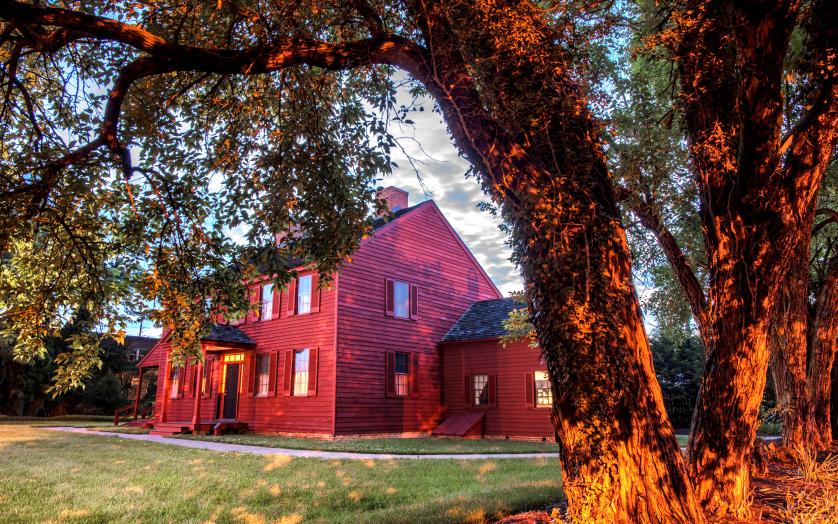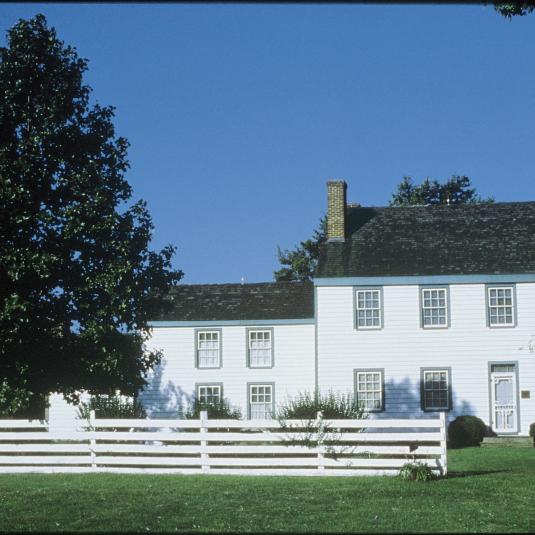
The Surratt Historic Site and Museum in Clinton, is where John Wilkes Booth stopped with David Herold on the night he assassinated President Lincoln.
The Pursuit of John Wilkes Booth
Follow the route of authorities as they pursued John Wilkes Booth, one of history's most notorious assassins, as he fled from Washington, D.C., and hid for several days in Southern Maryland before being cornered.
Travel through history as you follow the pursuit of the assassin, John Wilkes Booth...

The Surratt Historic Site and Museum in Clinton, is where John Wilkes Booth stopped with David Herold on the night he assassinated President Lincoln.
After shooting President Abraham Lincoln at Ford's Theatre, John Wilkes Booth fled into Southern Maryland and towards Virginia. His leg broken in a fall at the theater, Booth met up with accomplice David Herold before stopping at the Surratt House and Tavern for supplies and guns stashed there earlier. Booth and Herold then stopped at the farmhouse of Dr. Samuel A. Mudd, who splinted the assassin's leg. They managed to cross the Potomac River into Virginia more than a week later.
Day 1:
With the outbreak of the American Civil War, Washington, D.C., turned into the training ground, arsenal, supply depot, and nerve center for the Union cause. Newly formed regiments encamped in every quarter, and streets reverberated under the wheels of cannons. Cattle for meat grazed on the National Mall; sacks of flour, stacked against siege, surrounded the U.S. Treasury. Explore Washington using a historian to re-create Washington City during the 1860s. Other highlights include: Fort McNair, site of the Matthew Brady Studio, Navy Yard, Fort Stevens, Anderson Cottage – this is now called the Lincoln Cottage/Summer White House, Lincoln & Grant Memorials, Walter Reed Museum, Clara Barton House and the Arlington House & Cemetery.
Enjoy lunch at Union Station, before starting your afternoon tour at Ford’s Theatre National Historic Site. Ford’s Theatre and Ford’s Theatre Museum combine a remarkable collection of historic artifacts with a variety of interactive exhibits to tell the story of Abraham Lincoln’s presidency. The collection of artifacts includes the derringer that John Wilkes Booth used, as well as a replica of the coat that President Lincoln wore the night he was shot. Check in to a Maryland hotel and enjoy dinner at an area restaurant.
Day 2:
Start your day at the Surratt Historic Site and Museum, built in 1852 as a middle-class plantation home. During the war, it was a safe house for the Confederate underground which flourished in Southern Maryland. It was the country home of Mary Surratt, first woman to be executed by the U.S. government after being found guilty of conspiring to assassinate Abraham Lincoln. Next, visit the Dr. Samuel A. Mudd Home Museum. Claiming not to know the real identities of his visitors, nor that the president had been assassinated, Dr. Mudd examined Booth's leg, made a splint and had both men retire to an upstairs bedroom. The house is a two-story, two-part early Victorian frame farmhouse, furnished with family pieces and original pieces from the time period.
The Bryantown Tavern was used by Union pursuers as their headquarters the morning after the assassination. Dr. Mudd later was brought to the 1815 tavern for questioning. Next, it’s the St. Mary's Church and Cemetery, where Mudd and family are buried; and Port Tobacco, a hot spot for Confederate conspiracy. Enjoy lunch along the Potomac River at Captain Billy's Crabhouse. John Wilkes Booth crossed the Potomac River at Pope's Creek during his escape to Virginia. The story follows the escape into Virginia, with narration at Port Royal, where Booth and a small party stopped at the Brockenbrough-Peyton House and then continued south to the Garrett Farm. Nothing is left of the Garrett Farm where Booth died early on April 26. The site is now the right-of-way of U.S. 301; a state historical marker stands very near the site on the northbound lanes of the highway. Return to your hotel for the evening.
Day 3:
Explore other sites in Southern Maryland and/or Annapolis. Possible additions are:
• Point Lookout State Park - Originally a small resort community, this picturesque site became a Union hospital and then a prison holding captured Confederate soldiers. By June 1864 more than 20,000 prisoners crowded the camp. Terrible conditions led to the deaths of 3,384 men. Cemetery and monuments to the prisoner dead are located near the entrance to the multi-use park. The Visitor Center has Civil War exhibits and features walking trails to the prison site. The park is rumored to be haunted.
• St. Clement's Island Lighthouse - Lighthouses throughout the Chesapeake Bay were in danger of attack from Confederate regular forces and sympathizers. An attack here on May 19, 1864, didn't damage the lighthouse but ruined its effectiveness by destroying its lens and lamp.
• Sotterley Plantation - Home to Dr. Walter Hanson Stone Briscoe and three of his sons who served in the Confederate army. A plantation slave, George, later joined the United States Colored Troops and faced one of the Briscoe sons at Petersburg.
• Annapolis - The U.S. Naval Academy Museum has some Civil War content; the Banneker-Douglass-Tubman Museum honors African-American heroes Benjamin Banneker and Frederick Douglass; and the General Assembly meeting in the Maryland State House was the first to emancipate its slaves by legislation in 1864.
• Belair Mansion - Plantation owner George Cooke Ogle and family struggled to survive amid political turmoil and the heavy hand of Union authorities hoping to keep the area's Confederate sympathy in check.
• Fort Washington Park - This massive 1820s fortification was the only Washington D.C. Potomac River defense early in the war. Living history and monthly artillery demonstrations are offered.
• Fort Foote - Another of the Federal Potomac River fortifications designed to protect Washington D.C. It is named to honor Adm. Andrew H. Foote, famous for his actions on the Mississippi River.



